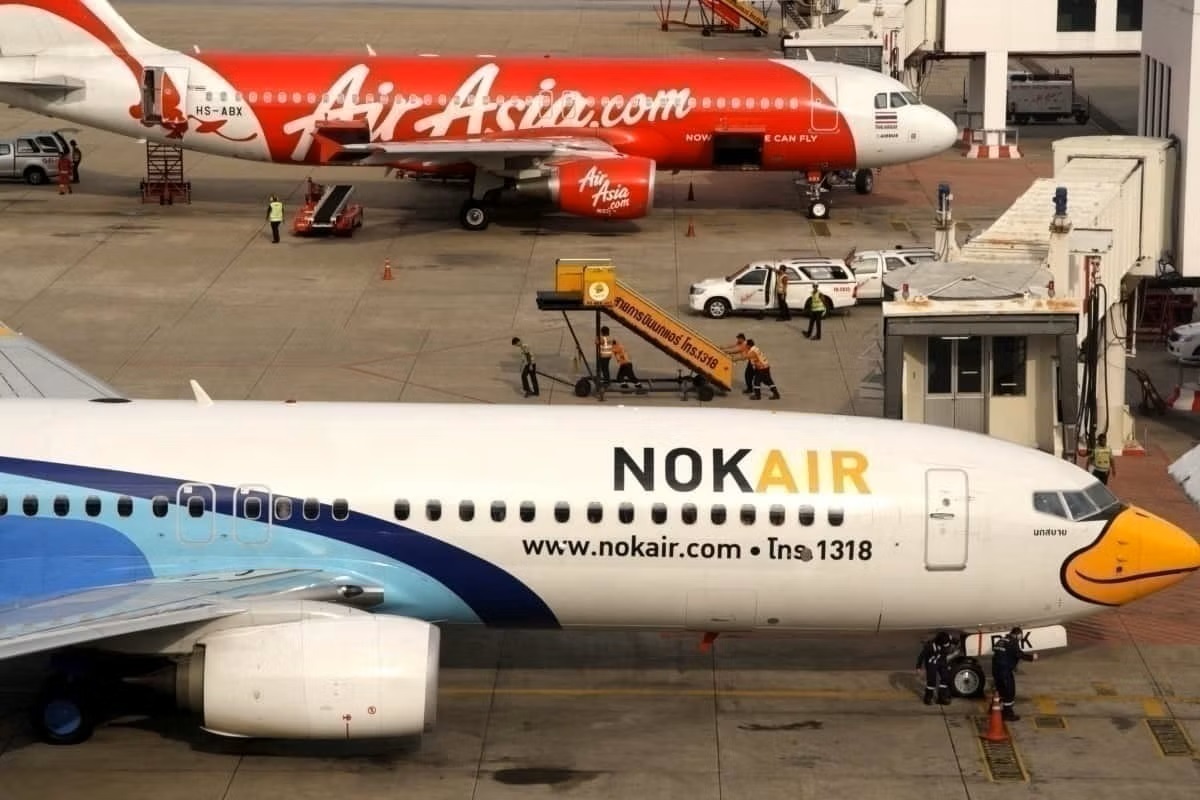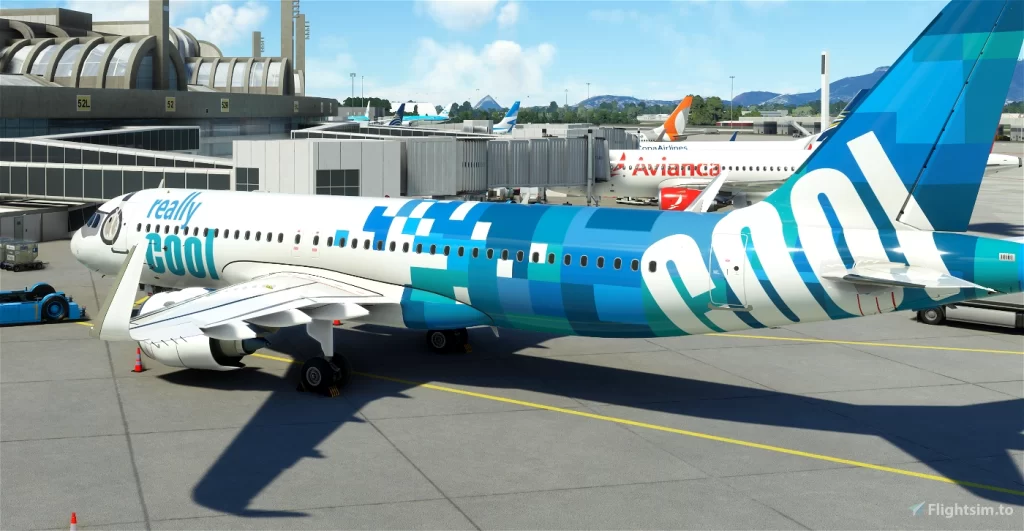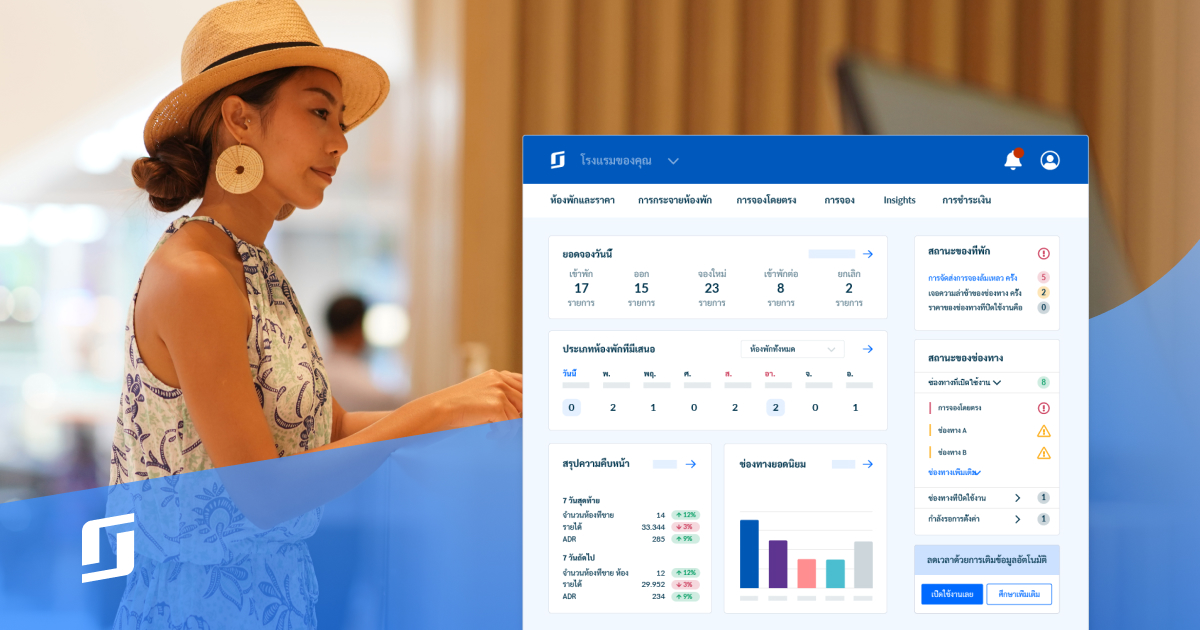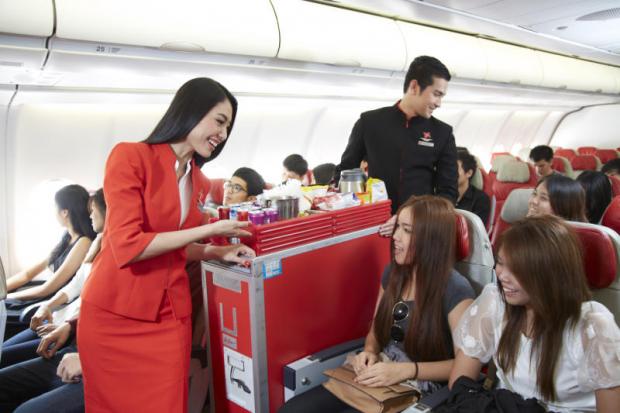Business
Thailand’s Low Cost Carriers Struggle Amid Fierce Competition

New low cost carriers in Thailand may have to struggle to survive because dominant budget carriers may engage in dumping to protect their market position, while airline seat resumption could take 10 years.
After obtaining an air operation licence in the third quarter of this year, Really Cool Airlines has applied for an air operating certificate (AOC), which it anticipates receiving in January 2024, according to Really Cool Airlines CEO and former Nok Air CEO Patee Sarasin.
The airline plans to begin full-service charter flights to cities like Tokyo, Nagoya, Hong Kong, Singapore, and Shanghai between March and May 2024 after getting the AOC, and then transition to scheduled flights beginning in the third quarter of that year.
Mr. Patee has stated that in the first quarter of this year, two Airbus A330-300 planes will be deployed, with an expected daily utilisation rate of 13 hours per plane.

By 2024’s close, the business hopes to have added two more jets to its fleet. He said that it would be impossible for a new airline to compete with the low-cost carriers by emphasising how Really Cool’s offerings are superior.
Mr. Patee told the Bangkok Post that incumbents could use their established infrastructure to their advantage by dumping prices on new entrants.
He cited the risk by noting that the Malaysian low-cost airline MYAirline abruptly ceased operations last week due to financial difficulties.
According to Mr. Patee, the low-cost market is still price-sensitive even though airfares have risen in the wake of the epidemic because of limited seat availability and rising demand.
He speculated that large airlines with the ability to routinely reduce costs to protect their market share would have an edge.
According to Mr. Patee, the new airline would operate two Airbus A330-300s by the end of the first quarter.
Mr. Patee warned that this tactic would hurt smaller businesses who couldn’t otherwise afford to decrease airfares as a result of rising operational costs. Long-distance service is where he sees the most potential for Really Cool Airlines.
Mr. Patee predicted that with the right hedging strategy, the airline would be able to control operational costs despite the higher fuel consumption and other expenses associated with these routes.
“While we obtain an AOC, the airline has completed other tasks and are 80-90% ready to fly,” stated the CEO.
“We already recruited pilots and will select 180 cabin crew by the end of this month after receiving 1,000 applications.”

Since the epidemic began, ticket prices have risen dramatically, which Mr. Patee attributes to the airline turning a profit sooner than projected (18 months).
The airline hopes to begin long-distance flights to Europe by 2026, making it the second airline after Thai Airways to offer such service.
He recommended keeping an eye on the examples established by the two newest Japanese airlines, Air Japan (owned by ANA) and Zipair (owned by Japan Airlines).
With high demand for travel to Japan and a different strategy than other low-cost carriers, those two airlines, according to Mr. Patee, could initially offer low rates before increasing them.
“New airlines have to differentiate themselves to survive,” according to him.
Mr. Patee predicted that it would take 10 years for seat capacity to return to pre-pandemic levels due to insufficient maintenance facilities, delayed delivery of new aircraft, a lack of labour, and airlines’ massive debts, notwithstanding the optimism of certain industry analysts.
Moreover, he noted, unanticipated external crises, such as the ongoing wars in Israel and Ukraine, could hamper progress.
“Based on my experience with Nok Air, it took five consecutive years to develop a steady profit until we could list the company on the stock exchange in 2013,” Mr. Patee added.
“It won’t be easy for airlines during this time to recover from the pandemic as the impact was greater than any crisis in the past.”
SiteMinder, a global hotel commerce platform, conducted a poll among travellers in Thailand and found that 88% of respondents planned to travel at least the same amount as they did in the previous year, with 53% planning to travel more.
From 26% in 2017 to 49% in 2018, the percentage of Thais who intend to travel abroad only about doubled.

According to SiteMinder, these findings are based on the results of the “world’s largest consumer research survey on accommodation,” the Changing Traveller Report 2023.
Based on interviews with over 10,000 tourists in Thailand and 11 other countries, we can deduce four trends that will shape the future of the global lodging industry:
The intrepid traveller: one who continues to hit the road despite the rising cost of living.
Those who can’t function without their smartphones or other electronic gadgets;
An old adage from the “Roaring Twenties” that still holds true today: “The memory maker” is spending money on experiences.
The open ally to lodgings and the neighbourhood; the conscious participant.
Despite the rising cost of living, nearly all Thai tourists say they are willing to spend more than the price of their lodging while abroad. SiteMinder said the result should come as no surprise as nearly nine out of ten domestic vacationers report a shift in their lodging requirements over the past year.
57% of upcoming Thai travellers plan to work remotely, therefore providing a “comfortable/inspiring work environment” is a top priority for today’s Thai vacationers. Thai travellers are second most likely to work during their next trip, behind only their Indian counterparts, down from 65% last year.

The majority of travellers plan to spend “most of the time” or “considerable time” at their lodgings on their next trip, and this is especially true of those who will be travelling internationally. Among Thais, this pattern is considerably more pronounced.
Regional vice president for Asia at SiteMinder Bradley Haines said that the study proved the tourism industry in Thailand was doing well.
“Contrary to recent years, we are seeing a stronger intent among Thai travellers to travel internationally only and spend money, even amid inflationary pressures,” according to him. “In addition, the role of lodging establishments is becoming increasingly important. Seventy-seven percent of domestic tourists want to make their hotel their final stop.
One of the most important takeaways from the survey is that the hospitality industry is seen as technologically behind other sectors, even though nearly 77 percent of Thai tourists are willing to tolerate lesser quality of service due to staff shortages.
The vast majority of local respondents (95%) believe that their booking experience and stay might be improved if accommodation providers were more tech-savvy, however over 60% think the accommodation industry is either average or behind when it comes to technology use.
According to SiteMinder’s findings, vacationers have widely varying levels of tech dependence.
More than half of all travellers worldwide, and more than two-thirds of millennials, are likely to utilise artificial intelligence to choose places to stay. 86% of Thai tourists are open to the idea of using AI to make lodging suggestions.

Seventy percent of all tourists use social media to find lodging, and ninety percent of all members of Generation Z think social media plays a role in choosing where to stay.
In Thailand, the influence of social media is even higher, at 25 percentage points over the worldwide average, making Thai tourists second only to Indonesians in terms of how influenced they are by social media while searching for a place to stay.
While 80% of travellers plan to utilise an online booking service at some point during their trip, 70% of those people have abandoned their online reservation due to a negative experience. Difficult processes and insecure websites are the most common causes of frustration.
“Today’s Thai traveller is enduring, extremely digitally dependent and conscious, with a strong desire to create memories for as long as the privilege of travelling remains available to them,” Mr. Haines stated.
“Through our research, we now know that they perceive the accommodation industry as being behind when it comes to technology adoption, and accommodation providers should see this as an invitation to invest in modern commerce technology that allows them to best cater for current customer needs and expectations.”
Russian President Vladimir Putin Accepts Invitation to Visit Thailand
Russian President Vladimir Putin Accepts Invitation to Visit Thailand

Business
PepsiCo Reduces Revenue Projections As North American Snacks And Key International Markets Underperform.

(VOR News) – In the third quarter of this year, Pepsi’s net income was $2.93 billion, which is equivalent to $2.13 per share. This was attributed to the company.
This is in stark contrast to net income of $3.09 billion, which is equivalent to $2.24 per share, during the same period in the previous year. The company’s earnings per share were $2.31 when expenses were excluded.
Net sales decreased by 0.6%, totaling $23.32 billion. Organic sales increased by 1.3% during the quarter when the effects of acquisitions, divestitures, and currency changes are excluded.
Pepsi’s beverage sales fell this quarter.
The most recent report indicates that the beverage and food sectors of the organization experienced a 2% decline in volume. Consumers of all income levels are demonstrating a change in their purchasing habits, as indicated by CEOs’ statements from the previous quarter.
Pepsi’s entire volume was adversely affected by the lackluster demand they encountered in North America. An increasing number of Americans are becoming more frugal, reducing the number of snacks they ingest, and reducing the number of times they purchase at convenience stores.
Furthermore, Laguarta observed that the increase in sales was partially attributed to the election that occurred in Mexico during the month of June.
The most significant decrease in volume was experienced by Quaker Foods North America, which was 13%. In December, the company announced its initial recall in response to a potential salmonella infection.
Due to the probability of an illness, the recall was extended in January. Pepsi officially closed a plant that was implicated in the recalls in June, despite the fact that manufacturing had already been halted.
Jamie Caulfield, the Chief Financial Officer of Pepsi and Laguarta, has indicated that the recalls are beginning to have a lessening effect.
Frito-Lay experienced a 1.5% decline in volume in North America. The company has been striving to improve the value it offers to consumers and the accessibility of its snack line, which includes SunChips, Cheetos, and Stacy’s pita chips, in the retail establishments where it is sold.
Despite the fact that the category as a whole has slowed down in comparison to the results of previous years, the level of activity within the division is progressively increasing.
Pepsi executives issued a statement in which they stated that “Salty and savory snacks have underperformed year-to-date after outperforming packaged food categories in previous years.”
Pepsi will spend more on Doritos and Tostitos in the fall and winter before football season.
The company is currently promoting incentive packets for Tostitos and Ruffles, which contain twenty percent more chips than the standard package.
Pepsi is expanding its product line in order to more effectively target individuals who are health-conscious. The business announced its intention to acquire Siete Foods for a total of $1.2 billion approximately one week ago. The restaurant serves Mexican-American cuisine, which is typically modified to meet the dietary needs of a diverse clientele.
The beverage segment of Pepsi in North America experienced a three percent decrease in volume. Despite the fact that the demand for energy drinks, such as Pepsi’s Rockstar, has decreased as a result of consumers visiting convenience stores, the sales of well-known brands such as Gatorade and Pepsi have seen an increase throughout the quarter.
Laguarta expressed his opinion to the analysts during the company’s conference call, asserting, “I am of the opinion that it is a component of the economic cycle that we are currently experiencing, and that it will reverse itself in the future, once consumers feel better.”
Additionally, it has been noted that the food and beverage markets of South Asia, the Middle East, Latin America, and Africa have experienced a decline in sales volume. The company cut its forecast for organic revenue for the entire year on Tuesday due to the business’s second consecutive quarter of lower-than-anticipated sales.
The company’s performance during the quarter was adversely affected by the Quaker Foods North America recalls, the decrease in demand in the United States, and the interruptions that occurred in specific international markets, as per the statements made by Chief Executive Officer Ramon Laguarta.
Pepsi has revised its forecast for organic sales in 2024, shifting from a 4% growth rate to a low single-digit growth rate. The company reiterated its expectation that the core constant currency profitability per share will increase by a minimum of 8% in comparison to the previous year.
The company’s shares declined by less than one percent during premarket trading. The following discrepancies between the company’s report and the projections of Wall Street were identified by LSEG in a survey of analysts:
SOURCE: CNBC
SEE ALSO:
Old National Bank And Infosys Broaden Their Strategic Partnership.
Business
Old National Bank And Infosys Broaden Their Strategic Partnership.

(VOR News) – Old National Bank, a commercial bank with its headquarters in the Midwest, and Infosys, a firm that specializes in information technology, have recently entered into a strategic expansion of their link, which has been in place for the past four years.
This expansion is more likely to take place sooner rather than later, with the likelihood being higher.
For the purpose of making it possible for Old National Bank to make use of the services, solutions, and platforms that are offered by Infosys, the objective of this expansion is to make it possible for the bank to transform its operations and processes through the application of automation and GenAI, as well as to change significant business areas.
This lets the bank leverage Infosys’ services, solutions, and platforms.
Old National Bank Chairman and CEO Jim Ryan said, “At Old National, we are committed to creating exceptional experiences for both our customers and our fellow employees.”
This statement is applicable to Old National Bank. Infosys is carefully managing the business process innovations that it is putting us through, putting a strong emphasis on efficiency and value growth throughout the process to ensure that it is carried out efficiently.
This is a routine occurrence throughout the entire operation. Because of Infosys’ dedication to our development and success, we are incredibly appreciative of the assistance they have provided.
Old National has been receiving assistance from Infosys in the process of updating its digital environment since the year 2020, according to the aforementioned company.
Ever since that time, the company has been providing assistance. The provision of this assistance has been accomplished through the utilization of a model that is not only powerful but also capable of functioning on its own power.
Infosys currently ranks Old National thirty-first out of the top thirty US banks.
This ranking is based on the fact that Old National is the nation’s largest banking corporation.
It is estimated that the total value of the company’s assets is approximately fifty-three billion dollars, while the assets that are currently being managed by the organization are valued at thirty billion dollars.
Dennis Gada, the Executive Vice President and Global Head of Banking and Financial Services, stated that “Old National Bank and Infosys possess a robust cultural and strategic alignment in the development, management, and enhancement of enterprise-scale solutions to transform the bank’s operations and facilitate growth.”
This remark referenced the exceptional cultural and strategic synergy between the two organizations. Dennis Gada is the one who asserted this claim. This was articulated explicitly concerning the exceptional cultural congruence and strategy alignment of the two organizations.
We are pleased to announce that the implementation of Infosys Topaz will substantially expedite the transformation of Old National Bank’s business processes and customer service protocols. We are exceedingly enthusiastic about this matter. We are quite thrilled about this specific component of the scenario.
Medium-sized banks operating regionally will continue to benefit from our substantial expertise in the sector, technology, and operations. This specific market segment of Infosys will persist in benefiting from our extensive experience. This phenomenon will enable this market sector to sustain substantial growth and efficiency benefits.
SOURCE: THBL
SEE ALSO:
American Water, The Largest Water Utility In US, Is Targeted By A Cyberattack
States Sue TikTok, Claiming Its Platform Is Addictive And Harms The Mental Health Of Children
Qantas Airways Apologizes After R-Rated Film Reportedly Airs On Every Screen During Flight
Business
American Water, The Largest Water Utility In US, Is Targeted By A Cyberattack

The largest regulated water and wastewater utility company in the United States stated Monday that it had been the target of a cyberattack, forcing the company to halt invoicing to consumers.
American Water, The Largest Water Utility In US, Is Targeted By A Cyberattack
American Water, based in New Jersey and serving over 14 million people in 14 states and 18 military facilities, said it learned of the unauthorized activity on Thursday and quickly took precautions, including shutting down certain systems. The business does not believe the attack had an impact on its facilities or operations and said employees were working “around the clock” to determine the origin and scale of the attack.

According to their website, American Water operates over 500 water and wastewater systems in around 1,700 communities across California, Georgia, Hawaii, Illinois, Indiana, Iowa, Kentucky, Maryland, Missouri, New Jersey, Pennsylvania, Tennessee, Virginia, and West Virginia.
SOURCE | AP
-

 News4 years ago
News4 years agoLet’s Know About Ultra High Net Worth Individual
-
Entertainment2 years ago
Mabelle Prior: The Voice of Hope, Resilience, and Diversity Inspiring Generations
-
News11 years ago
Enviromental Groups Tell Mekong Leaders Lao Dam Evaluation Process Flawed
-

 Health4 years ago
Health4 years agoHow Much Ivermectin Should You Take?
-

 Tech3 years ago
Tech3 years agoTop Forex Brokers of 2023: Reviews and Analysis for Successful Trading
-

 Lifestyles3 years ago
Lifestyles3 years agoAries Soulmate Signs
-

 Entertainment3 years ago
Entertainment3 years agoWhat Should I Do If Disney Plus Keeps Logging Me Out of TV?
-

 Health3 years ago
Health3 years agoCan I Buy Ivermectin Without A Prescription in the USA?